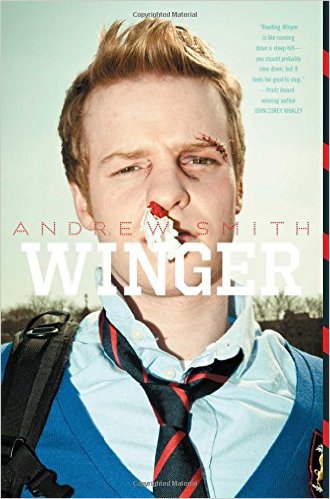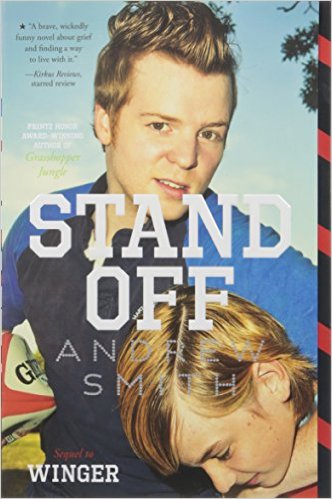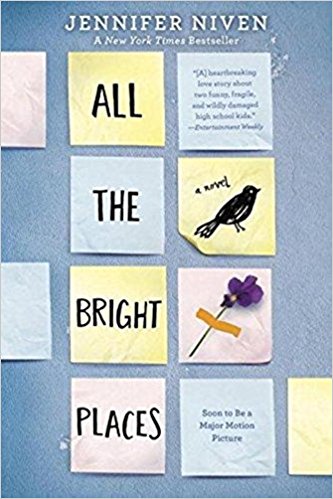 All the Bright Places sort of destroyed me for a day, it was so emotionally demanding. I mean, the story took me through the wringer and once I’d finished it, I couldn’t stop thinking about it and reliving the emotions I’d felt while reading it. I came to the book without being aware of the hype and the comparisons to Eleanor and Park and The Fault in Our Stars. Despite that, Eleanor and Park was exactly the book it made me think of, not because of the story, but because of the emotional depth and the journey it took me on.
All the Bright Places sort of destroyed me for a day, it was so emotionally demanding. I mean, the story took me through the wringer and once I’d finished it, I couldn’t stop thinking about it and reliving the emotions I’d felt while reading it. I came to the book without being aware of the hype and the comparisons to Eleanor and Park and The Fault in Our Stars. Despite that, Eleanor and Park was exactly the book it made me think of, not because of the story, but because of the emotional depth and the journey it took me on.
Mental illness and suicide are at the forefront of everything in the book, but the story goes beyond the mental illness to tell a story about two teenagers who seem unbelievably real. Violet Markey was in a car accident that killed her sister several months before the book begins. Violet blames herself for what happened and has pretty much stopped living. She just floats from day to day and slips further into depression. The things she used to care about most don’t matter to her at all anymore. One day her feet carry her to the top of her school’s six-story-tall bell tower.
That’s where she encounters Theodore Finch, the school’s resident “freak,” as the bullies call him. But Finch isn’t a freak—he’s a kid with a serious and treatable mental illness that he doesn’t understand or want to acknowledge. We don’t initially have a name for what’s wrong with him, but he loses track of time, sometimes seems to wake up with no memory of how he got places, goes days without sleeping, and at times has so much energy that he has to run for miles to feel normal again. It’s not hard to figure it out if you know a little about mental illness, but it doesn’t get named until close to the end.
Finch is self-aware despite being afraid of labels, which he thinks will lead to being mistaken for a mental illness. Here he is thinking about a breakdown he had:
It’s my experience that people are a lot more sympathetic when they can see you hurting, and for the millionth time in my life I wish for measles or smallpox or some other recognizable just to make it simple for me and also for them.
He’s not wrong.
Despite Finch’s obsession with death, I was convinced throughout that he does want to live, but that he needs to learn how. And he’s trying. Although he resists the efforts of the school counselor he’s required to see, there are moments when he’s almost honest with him. And one time he tells Violet that he gets into these moods that he can’t shake:
“Kind of black, sinking moods. I imagine it’s what being in the eye of a tornado would be like. All calm and blinding at the same time. I hate them.”
It’s a huge moment because he’s actually being open and honest about how he feels. But Violet doesn’t have enough experience with him to recognize it. She chalks it up to being a teenager. Earlier in the book, he describes his father’s black moods:
“Like, the blackest black. Like, no moon, no stars, storm’s coming black.
She doesn’t make the connection right away—but it’s sad, because why would she? She’s not a psychiatrist. She’s just a kid with not much real-world experience.
If Finch isn’t going to get through to Violet, someone who deeply cares about him, what about his family? Violet and Finch’s families are radically different. Violet’s parents are engaged with her even though they don’t really know what to do for her. Admittedly, they don’t catch on to how badly Violet’s handling her sister’s death—they don’t see the depression for what it is. Probably they should have gotten her into counseling other than the school counselor. But it’s not unbelievable that they wouldn’t think of it.
Finch’s family, on the other hand, is horrible. He has a physically abusive father and a super-detached mother who is herself likely suffering from depression after being dumped by Finch’s father. She pays no attention to Finch or his sisters and it’s a deeply frustrating situation for the reader throughout the book. It’s so obvious that something is really, really wrong. But again, it’s entirely believable that a family like this could exist. It’s also clear that whatever afflicts Finch also afflicts his father and that his father would never, ever admit to having a mental illness.
I’ve talked mostly about Finch here, but Violet’s journey is just as significant. With his help, she learns to live again—she overcomes things that scare her and starts wanting to enjoy herself again. Rather than living a day at a time, she starts planning ahead. It’s a very realistic and believable recovery, given that her depression had a specific trigger.
Although this book is about mental illness and suicide, it’s not overly message-y. It’s a great story written really well. It is told in dual perspective, and Violet and Finch’s voices are totally different and true to their situations. Niven loads the book with little details that make the characters and settings authentic and relatable (this is one of the things that makes it like Eleanor and Park for me—because Rowell is a master of important details). Her descriptions throughout are excellent. Here’s Finch thinking about how he sometimes feels:
[T]he headaches are part of it. It’s like my brain is firing so fast that it can’t keep up with itself. Words. Colors. Sounds. Sometimes everything else fades into the background and all I’m left with is sound. I can hear everything, but not just hear it—I can feel it too. But then it can come on all at once—the sounds turn into light, and the light goes too bright, and it’s like it’s slicing me in two, and then comes the headache. But it’s not just a headache I feel, I can see it, like it’s made up of a million colors, all of them blinding.
I really cannot recommend this book enough. It’s important and well-executed and everyone should read it for insight into authentic depression and suicidal ideations, as well as for the good story.
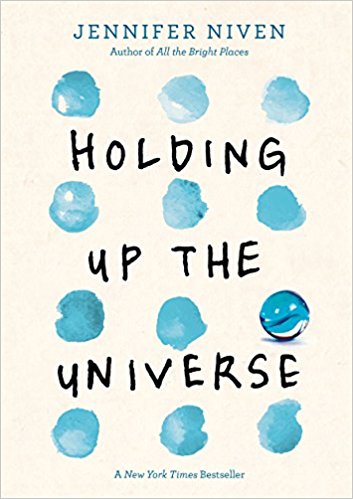 Niven’s other YA book, All the Bright Places, is probably going to remain one of my favorite YA novels of all time. So Holding Up the Universe had a lot to live up to, for me.
Niven’s other YA book, All the Bright Places, is probably going to remain one of my favorite YA novels of all time. So Holding Up the Universe had a lot to live up to, for me.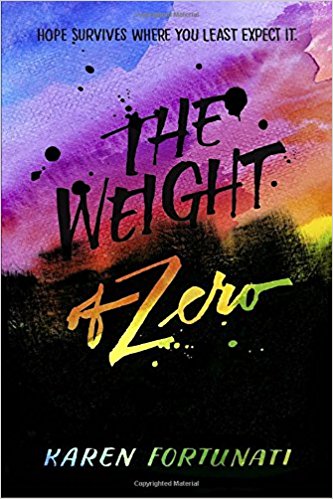 There has been a lot of books about mental illness coming out lately, which I think is great as long as the author handles it carefully. The Weight of Zero is definitely a standout in the crowd of these books for its authenticity and solid story.
There has been a lot of books about mental illness coming out lately, which I think is great as long as the author handles it carefully. The Weight of Zero is definitely a standout in the crowd of these books for its authenticity and solid story.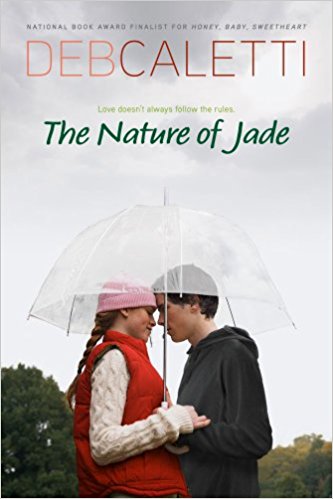 I always like a good book that deals with mental health issues, as long as it does so realistically and non-preachily.* The Nature of Jade fits the bill.
I always like a good book that deals with mental health issues, as long as it does so realistically and non-preachily.* The Nature of Jade fits the bill. All the Bright Places sort of destroyed me for a day, it was so emotionally demanding. I mean, the story took me through the wringer and once I’d finished it, I couldn’t stop thinking about it and reliving the emotions I’d felt while reading it. I came to the book without being aware of the hype and the comparisons to Eleanor and Park and The Fault in Our Stars. Despite that, Eleanor and Park was exactly the book it made me think of, not because of the story, but because of the emotional depth and the journey it took me on.
All the Bright Places sort of destroyed me for a day, it was so emotionally demanding. I mean, the story took me through the wringer and once I’d finished it, I couldn’t stop thinking about it and reliving the emotions I’d felt while reading it. I came to the book without being aware of the hype and the comparisons to Eleanor and Park and The Fault in Our Stars. Despite that, Eleanor and Park was exactly the book it made me think of, not because of the story, but because of the emotional depth and the journey it took me on. This book distressed me. Probably not in what could be said to be a good way, but in the right way (the way it was intended to).
This book distressed me. Probably not in what could be said to be a good way, but in the right way (the way it was intended to). This series contains some of the most readable books I’ve come across in a while. I devoured all four of them in a week (while reading some other books, too). Admittedly, they are short and I was trying to catch up on my Goodreads challenge (finally 82 books in, 0 behind at the time of writing) right before NaNo started because I don’t get much reading done in November, but still. I couldn’t put the last three down and read them in one day each. The first one took me three days because I have a job and other stuff I have to do.
This series contains some of the most readable books I’ve come across in a while. I devoured all four of them in a week (while reading some other books, too). Admittedly, they are short and I was trying to catch up on my Goodreads challenge (finally 82 books in, 0 behind at the time of writing) right before NaNo started because I don’t get much reading done in November, but still. I couldn’t put the last three down and read them in one day each. The first one took me three days because I have a job and other stuff I have to do. The premise of the series sounds a little underwhelming—fifteen-year-old Ruby is having serious boy and friend trouble. But there’s so much more to it than that. First off, due to some real nastiness on the part of her boyfriend of six months and best friend of ten years, she loses both as well as her two other really good friends. Basically, her friend Kim steals her boyfriend. They do this highly transparent thing where he breaks up with Ruby and a few days later is going out with Kim, and everyone acts like they behaved nobly because technically he and Ruby were already broken up. Then because of some weirdness, Ruby ends up going to the dance with the ex in question and kisses him—he kisses her back but when they’re caught, claims it was all her. So then everyone thinks she’s a tramp. As a result of all this, she starts having panic attacks and ends up visiting a shrink twice a week, which results in something that only makes her situation worse. In the first book (The Boyfriend List), her shrink has her write up a list of all boys she’s had any kind of romantic or quasi-romantic contact with. She comes up with a list of fifteen but then not-very-cleverly discards an old copy of the list, which Kim finds and distributes to everyone at the school. Suddenly Ruby’s a “slut.”
The premise of the series sounds a little underwhelming—fifteen-year-old Ruby is having serious boy and friend trouble. But there’s so much more to it than that. First off, due to some real nastiness on the part of her boyfriend of six months and best friend of ten years, she loses both as well as her two other really good friends. Basically, her friend Kim steals her boyfriend. They do this highly transparent thing where he breaks up with Ruby and a few days later is going out with Kim, and everyone acts like they behaved nobly because technically he and Ruby were already broken up. Then because of some weirdness, Ruby ends up going to the dance with the ex in question and kisses him—he kisses her back but when they’re caught, claims it was all her. So then everyone thinks she’s a tramp. As a result of all this, she starts having panic attacks and ends up visiting a shrink twice a week, which results in something that only makes her situation worse. In the first book (The Boyfriend List), her shrink has her write up a list of all boys she’s had any kind of romantic or quasi-romantic contact with. She comes up with a list of fifteen but then not-very-cleverly discards an old copy of the list, which Kim finds and distributes to everyone at the school. Suddenly Ruby’s a “slut.” You can imagine how this would be stressful. But it sets up a pretty good story. The first book is structured in an interesting way, too. Although it’s basically told in chronological order, each chapter is one of the fifteen boys on the list and focuses on explaining that past situation plus the one in current story time. In the second book (The Boy Book), she’s got one of her friends back and a new one, and a potential boyfriend, but that goes south when she has to turn him down because her friend likes him. The third book (The Treasure Map of Boys) is mostly about that same boy, but the nature of real friendship comes up, too. The final book (Real Live Boyfriends) delves more into the nature of relationships.
You can imagine how this would be stressful. But it sets up a pretty good story. The first book is structured in an interesting way, too. Although it’s basically told in chronological order, each chapter is one of the fifteen boys on the list and focuses on explaining that past situation plus the one in current story time. In the second book (The Boy Book), she’s got one of her friends back and a new one, and a potential boyfriend, but that goes south when she has to turn him down because her friend likes him. The third book (The Treasure Map of Boys) is mostly about that same boy, but the nature of real friendship comes up, too. The final book (Real Live Boyfriends) delves more into the nature of relationships. While the series itself has a clear arc, each book also tells a complete story. Ruby herself is hilarious. She’s quirky (I feel like that has become a sort of cliched description, but in this case it’s true) without being weird in a bad way. She’s troubled and going through some pretty horrible stuff, but it doesn’t get to her as much as it might others. The other characters are also well-drawn, all through Ruby’s eyes. The books are set in Seattle, too, which is fun because I’m nearby and sort of know some of the places they talk about. The dialogue is fantastic and Lockhart perfectly captures Ruby’s world. Lockhart’s clearly one of the most talented YA authors around right now. I can’t believe it took me so long to find her.
While the series itself has a clear arc, each book also tells a complete story. Ruby herself is hilarious. She’s quirky (I feel like that has become a sort of cliched description, but in this case it’s true) without being weird in a bad way. She’s troubled and going through some pretty horrible stuff, but it doesn’t get to her as much as it might others. The other characters are also well-drawn, all through Ruby’s eyes. The books are set in Seattle, too, which is fun because I’m nearby and sort of know some of the places they talk about. The dialogue is fantastic and Lockhart perfectly captures Ruby’s world. Lockhart’s clearly one of the most talented YA authors around right now. I can’t believe it took me so long to find her.